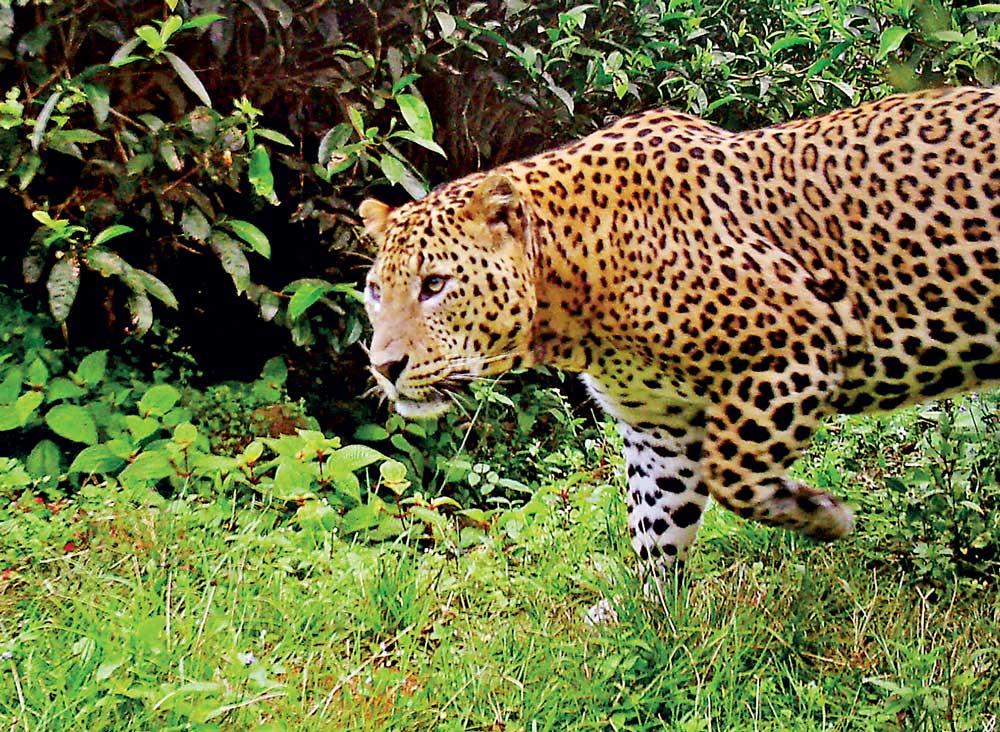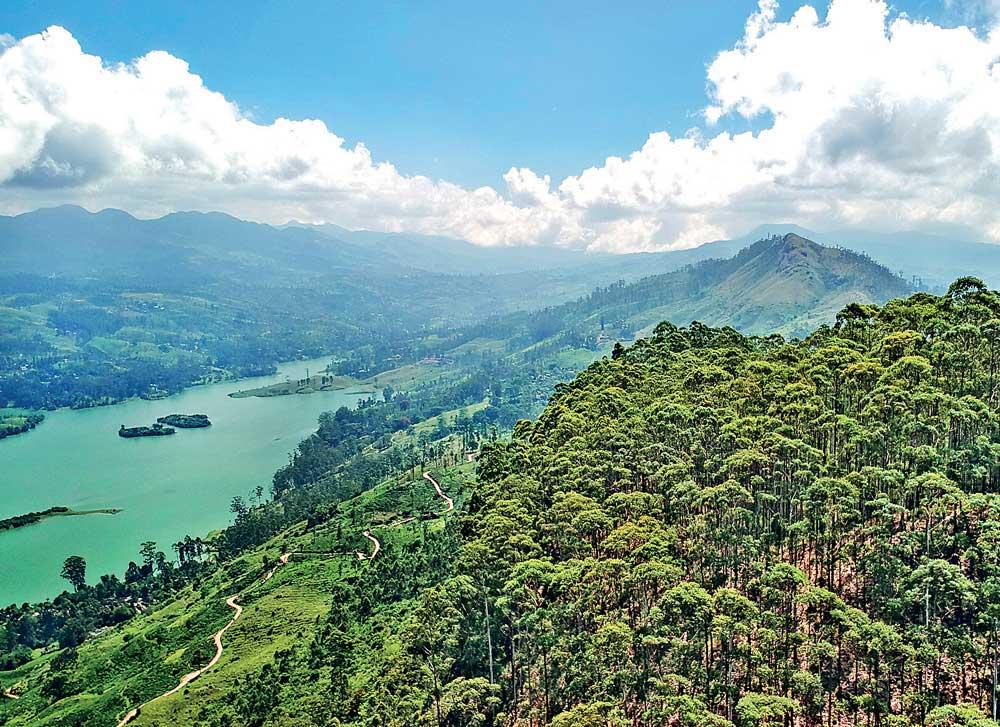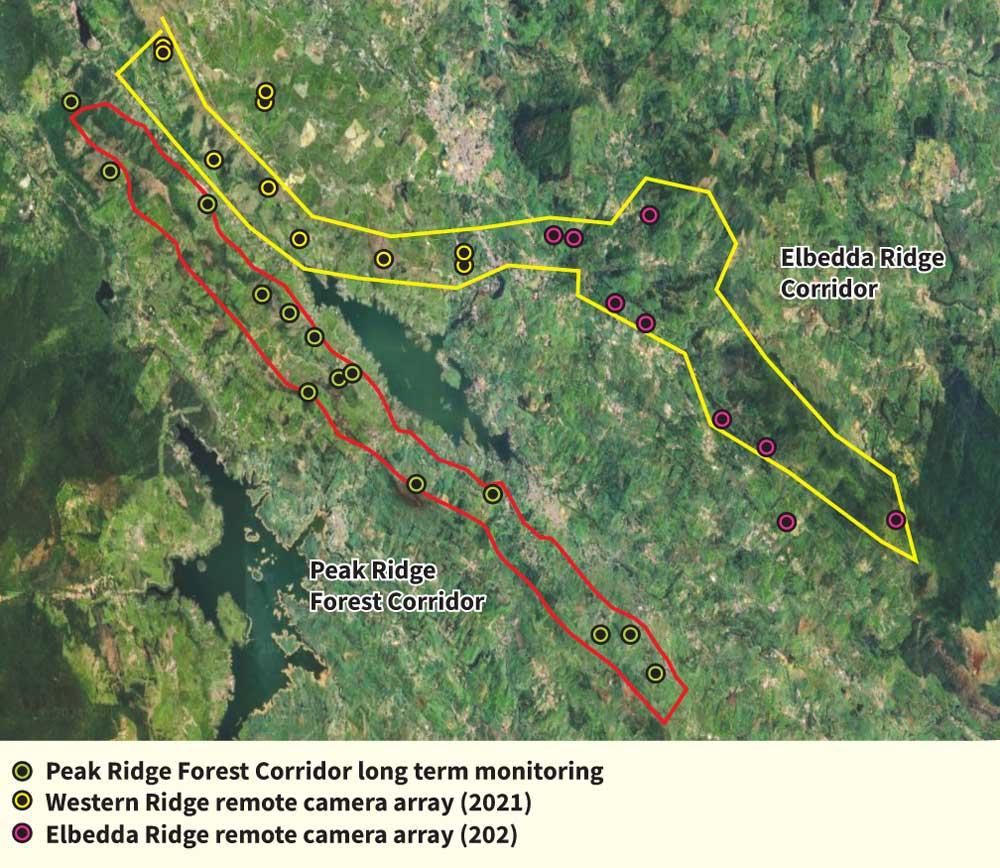Reply To:
Name - Reply Comment

A leopard on ERC

Landscape image.of PRFC
 The leopard is a charismatic, wide-ranging and adaptable carnivore, and in Sri Lanka, the endemic sub-species Panthera pardus kotiya, plays the role of apex predator which increases its ecological importance.
The leopard is a charismatic, wide-ranging and adaptable carnivore, and in Sri Lanka, the endemic sub-species Panthera pardus kotiya, plays the role of apex predator which increases its ecological importance.
For these reasons the leopard can play a vital role as an “umbrella” species, which means that by protecting the habitat needed for a long-term, viable leopard population, we can also conserve the wider biodiversity that utilises that same habitat and therefore falls under its ecological “umbrella”. As a result, this island leopard can hold an extremely important position in influencing landscape-level conservation and how we are to use our limited landmass.
This series of articles looks at how this position could be used practically, on the ground for conservation planning. Examples from ongoing research from various locations across the country will highlight this.
Article 1: Corridors for Conservation - Central Highlands
Connecting larger forests while providing additional refuge
In response to the human-caused deaths of nine Central Highland leopards in six months in 2016, the Wilderness & Wildlife Conservation Trust (WWCT) initiated monitoring leopard activity in the unprotected, tea plantation region immediately north of the Peak Wilderness Sanctuary. Enabled by the provision of a small research station by Resplendent Ceylon and Dilmah Tea, in one year, WWCT set up 75 remote camera stations across 30 tea estates, stretching across a 300 km2 area in and around the Maskeliya-Norwood-Bogawanthalawa valley. As photo captures of leopards at different stations accumulated, one ridgeline in particular emerged as being vital to leopard survival in this region. A ride that was also part of the watershed for the two hydroelectric reservoirs it sat between.
Running on a Sout East-North West axis between the Maskeliya and Castlereagh reservoirs and linking two distant parts of the Peak Wilderness complex via the Balapennegala Forest Reserve, this 18-km long upland area was revealed to be of key importance as a refuge for leopards and general wildlife, and specifically for female leopards and their cubs. Leopards utilise vast areas, especially where prey resources are less dense, so they move throughout this tea-dominated landscape, including the lower valleys, but it is the higher elevation ridges that act as important refuges, as well as corridors and connections for leopards in this landscape. Other wildlife, including the endangered purple-faced langur, the diminutive rusty-spotted cat and the pangolin – the most trafficked wildlife species in the world - are also found along these ridgelines. This land use is perhaps a behavioral adaptation to reduce potential interactions with humans in this heavily human utilised plantation landscape. Another key adaptation that we’ve document is the reduced daytime activity of leopards here compared to populations in protected areas in the country.

After more than four years of monitoring and delays due to COVID-19, a Memorandum of Understanding (MoU) was signed in 2021 by WWCT and the current primary land-holders along this ridge: Four partner Regional Plantation Companies (RPCs - Horana Plantations Plc, Madulsima Plantations Plc, Bogawanthalawa Plantations Plc, MJF Tea Gardens), the privately owned Kelani-Braema estate and three individual estates of Maskeliya Plantations Plc and Resplendent Ceylon, to conserve this ridgeline, now declared as the Peak Ridge Forest Corridor (PRFC). The broad-scale, multi-partner collaboration represents a novel approach to landscape-level conservation in Sri Lanka.
With the ongoing support and encouragement from the estate companies in the region, and while continuing to monitor and secure the PRFC, WWCT initiated similar research along parallel and adjacent ridgelines to identify leopard land use areas, launching the “Corridors for Conservation” Initiative in 2021. Under this initiative another upland area was rapidly identified across the Castlereagh reservoir to the North-East, with a similarly robust and active leopard population and a similar suite of biodiversity to PRFC. This 9.5-km long upland area was declared as the Elbedda Ridge Corridor (ERC) and a MoU signed in 2023 between WWCT and Kelani Valley Plantations Ltd (KVPL) – the current land-holder of all 7 estates that line this ridge to the south - to ensure its continued protection.
Leopard land-use and corridor selection
Long-term monitoring of PRFC and ERC is continuing. Leopard populations are typically dynamic, with cubs being born and then emigrating to new areas, young adults and sometimes older individuals ousted, and resident animals dying and creating short-lived vacuums for others to fill. Upon initiating this work, we feared that this region would be a population sink where animals from “better”, more intact habitat would be forced to come and residency times would be short with a turnover of individuals high. We have been excited to learn, that while the inherent risks of living in such a fragmented and human-dominated landscape can take their toll – most obviously in the form of wire snares set for wild boar and barking deer but indiscriminate in their killing – this is a landscape with long-term resident animals that are reproducing regularly. Although it is difficult to effectively monitor all the cubs detected, it is clear that cub recruitment into the wider population is ongoing with regularity.
Since the inception of our research here in 2016 we have documented 50+ individual leopards using the PRFC, inclusive of cubs and transients. At any one time it is home to 10 – 12 resident leopards, some of whom live exclusively here (most of the females) while others include PRFC as part of a larger range (typically males whose ranges are considerably larger than females). One resident female ‘OC’ has been living in the same area on PRFC for almost 8 years, during which time she has littered 5 sets of cubs! Another resident female ‘Ola’ been monitored for over 5 years. Infamous resident male ‘Arnold’ that we monitored for over 5 years on PRFC before he suddenly disappeared, was recently re photo-captured by a colleague on the far side across the PRFC. Of the 14 litters that we have tracked so far, at least seven cubs have survived to adulthood, with the number probably higher as we are limited to remote camera monitoring.
Although monitored for a shorter duration – since 2021 – the ERC has shown similar patterns with 20 individual leopards documented. Of these, 8 – 10 resident adults occupy ERC at a particular time, with land tenure similar to that of PRFC. So far, we have documented 5 sets of cubs with at least one known to reach adulthood. Again, it is highly likely more do so. One of the key resident males ‘OZZY’ on ERC we first documented on PRFC over 7 ½ years ago, and was found on both until 2023 when he seemed to curtail his use of PRFC. He also uses another estate landscape area to the west. Another of the resident males of ERC, ‘Nino’ was born on PRFC in 2019 and established himself in this new landscape 9 kms to the north. This vital leopard land use information underscores the importance of identifying such connections and establishing such corridors in this highly fragmented landscape.
Combatting threats across the landscape
The news is not all good. We have been brought low on more than one occasion by the death of one of the monitored leopards been killed in a snare. First it was resident female ‘Norma’, followed by ‘Nina’ on PRFC who had birthed three cubs the year before. One of her maturing female cubs took over her range after her death. The most recent was one of the adult daughters of our longest monitored female ‘OC’, who had a cub of her own at the time of her death. This cub is now over a year and managing to survive. One of the agreements of PRFC and ERC is the conducting anti-snaring campaigns, and resource material has been widely distributed with snare removal patrols being actively undertaken with DWC and a number of estates. This is bringing events to full circle as it was widespread snaring that was the purpose of initial research here back in 2016.
Another key pillar of the “Corridors for Conservation” initiative is education and awareness aimed mostly at estate schoolchildren. In keeping with this our Forest Guardians programme aims to foster in school kids and communities, an understanding about the vital role of leopards, wildlife and intact forests for a healthy future. Establishing 15 dedicated Resource Rooms within the PRFC and ERC are part of this programme.
As these ridgelines are important components of the vital watersheds which provide for the Maskeliya and Castlereagh reservoirs and their attendant hydro-electric power facilities, restoration of degraded habitat on these slopes is also important. As such, select degraded areas of these ridges have been - and are being identified - for restoration with native forest plant species. This restoration has the potential to improve the catchment area, decrease erosion, eliminate seasonal water shortages and provide additional wildlife habitat for leopards and other biodiversity. To implement this, we are establishing five dedicated forest plant nurseries in partnership with estate companies and private individuals, and have begun reforestation of initial plots.
Partnerships
Joining us in the Corridors for Conservation journey are many additional partners without whose support this work would not be possible. And so in addition to the RPC’s and Resplendent Ceylon, we thank the Whitley Fund for Nature (WFN), Alliance Finance plc, Lanka Environment Fund (LEF) and the Oak Foundation, Vogue Jewellers, Olu Water, CERZA Conservation and Seacology for enabling this ambitious conservation programme in Sri Lanka’s Central Highlands.
Organisations, such as the Wildlife & Nature Protection Society (WNPS), the Hill Country Leopard Group, and the UN/Ministry of Environment Global Environment Facility (UN-GEF) Round VII project, have begun/are starting similar component initiatives in this plantation landscape. We hope that together these initiatives will help conserve and improve Sri Lanka’s under-protected, highly biodiverse, vital Central Highlands.
(Authors of this article are members of the Wilderness & Wildlife Conservation Trust team)